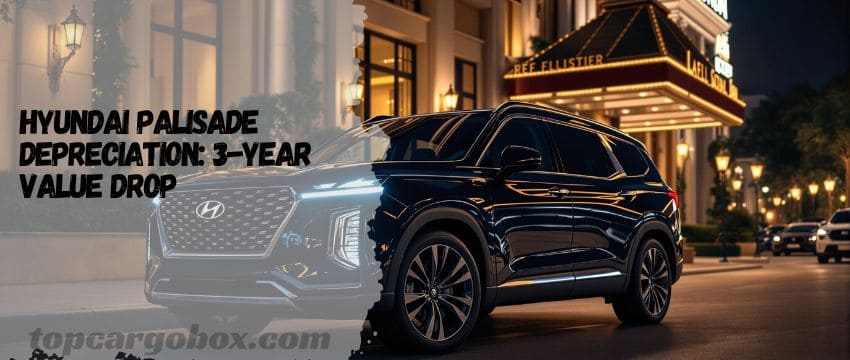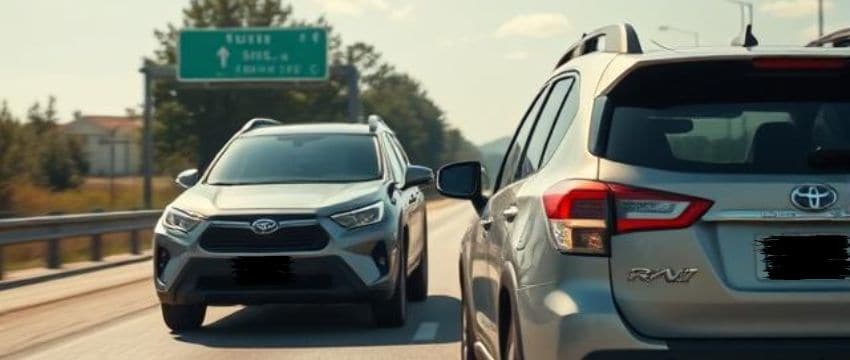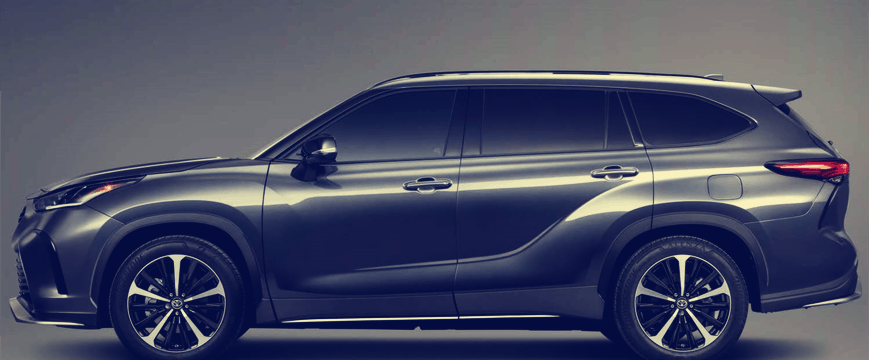What’s up, Palisade owners and future drivers? Ever feel like that massive touchscreen in your dash is holding out on you? Like there’s more magic lurking beneath the surface? Or maybe you’ve just been battling that annoying glitch where Apple CarPlay randomly quits? Totally get it. Buckle up, because we’re diving deep into the Palisade’s infotainment system – uncovering the cool hidden features you need to know and tackling those common issues that drive you nuts. We’re going way beyond the owner’s manual basics here. Ready to become a Palisade tech wizard? Let’s roll.
Getting Friendly with Your Palisade’s Tech Hub
Okay, so first things first. What are we even working with here? Hyundai calls this setup the “Display Audio” system, and depending on your Palisade’s year and trim level (Calligraphy crew, represent!), you’ve got either a 10.25-inch or a ginormous 12.3-inch widescreen display taking center stage. It’s seriously the command center for almost everything inside – music, navigation, climate controls (on higher trims), phone calls, settings, you name it. Think of it as the brain of your car’s interior experience. Getting cozy with its layout is step one to unlocking its full potential and troubleshooting when things go sideways.

It runs on Hyundai’s own software, and honestly, recent updates have made it much smoother and more intuitive than older systems. The main menu is usually split into clear tiles or icons: Navigation, Media, Phone, Setup, and Vehicle settings are the big ones. You can tap, swipe, or use the physical buttons and knobs flanking the screen – a nice touch for when you’re bouncing down a rough road and need precise control. Familiarizing yourself with these basics makes finding the hidden gems way easier. No big deal, right?
Standard Features You Probably Know (But Let’s Recap)
Before we jump into the secret stuff, let’s quickly cover the headline acts. You obviously know about Apple CarPlay and Android Auto – wireless on most newer models, which is awesome. Plug in (or connect wirelessly), and boom, your phone’s world is mirrored on the big screen. Navigation is built-in on higher trims, offering turn-by-turn guidance without needing your phone, which can be a lifesaver in areas with spotty cell service. Bluetooth connectivity is a given, letting you stream music and take calls hands-free. Sound comes pumping through a decent 6-speaker system, or you can upgrade to the premium setups like the 12-speaker Harman Kardon system – legit good for road trips.
You’ve also got HD Radio, SiriusXM Satellite Radio capability (subscription required, obviously), and USB ports galore for charging and connecting devices. Climate controls are integrated right into the screen on Limited and Calligraphy trims, meaning you can adjust fan speed, temperature, and seat heating/cooling without reaching for physical buttons. It looks slick, though some folks find it takes an extra tap or two compared to old-school knobs. Fair enough! And don’t forget the split-screen functionality – seeing your map and your music player at the same time? That’s pretty sweet.
Unlocking Hidden Gems: Features They Don’t Always Tell You About
Alright, here’s where it gets fun. Hyundai packed some seriously cool tricks into this system that aren’t exactly advertised on the showroom floor. These are the features that make you go, “Wait, it can do that? For real?” Let’s uncover those Easter eggs and level up your Palisade experience. Trust me, some of these will blow your mind.
Secret Voice Command Superpowers
You know you can say “Hey Hyundai” or press the steering wheel button to tell it to “Call Mom” or “Navigate Home,” right? But dude, it understands way more natural language than you might think. Try stuff like:
- “Find the cheapest gas station nearby.”
- “Play the latest album by [Artist Name] on Spotify.”
- “Show me restaurants with outdoor seating.”
- “Set the driver’s seat temperature to 72 degrees.” (On equipped trims)
- “Turn on the rear defroster.”
Seriously, experiment! You might be surprised at what commands it understands beyond the basic list. It’s like having a slightly smarter co-pilot. How many times have you wished you could just tell the car what to do without fumbling through menus while driving?
Driver Profiles: Your Car, Your Way (Seriously!)
If you share your Palisade with a partner or family member, this one is a game-changer. Buried deep in the settings (usually under “User Profiles” or “Driver Settings”), you can create personalized driver profiles. This isn’t just about saving your seat and mirror position (though it does that too!). Link your profile to your key fob, and when you unlock the car, it can automatically:
- Load your favorite radio presets or SiriusXM channels.
- Set your preferred climate control settings (temp, fan speed, seat heat/vent).
- Adjust your side mirror positions.
- Recall your last navigation destinations.
- Even apply your preferred instrument cluster layout and theme!
It genuinely makes hopping into a shared car feel like it’s yours alone. Why deal with resetting everything every single time? Set it up once and forget it. Feeling lazy? Totally valid.
Split-Screen Customization: Beyond the Basics
You know you can split the screen, usually with navigation on one side and media on the other. But did you know you can often customize what appears in each pane? Dig into the display or screen settings. Depending on the model year, you might be able to choose from options like:
- Trip Computer (showing fuel economy, range, etc.)
- Vehicle status (tire pressure, maintenance info)
- Recent phone call list
- Fuel economy history
- A dedicated compass
- Even a cool “Live” weather radar overlay if you have the connected navigation!
This means you can have your map up and keep a constant eye on your tire pressures, or see your trip stats while jamming to tunes. It’s about making the information you care about most accessible at a glance. Pretty good, huh?
Hidden Diagnostic Menus (Proceed with Caution!)
Okay, this one is for the truly adventurous tech geeks. There are often hidden engineering menus accessible through specific button presses. Warning: Messing around in these menus can potentially mess with settings you don’t understand! Only poke around if you know what you’re doing or are willing to accept the risk. That said, accessing them might let you see deeper system info, signal strengths, or even run diagnostics on specific components. How do you find them? Off the top of my head, it often involves holding down specific buttons like “Setup” and “Map” simultaneously for 10 seconds. If you really want to dive deep, searching forums for your specific model year might reveal the exact sequence. Remember: enter at your own risk! Not a big deal if you just look, but changing stuff? Nah, maybe leave that to the pros.
Rear Seat Entertainment Hacks (If Equipped)
Got the fancy rear seat entertainment system? Those headrest screens aren’t just for the kids’ movies. Did you know passengers in the back can often connect their own devices via HDMI or USB? Forget just the built-in DVD player! They can potentially mirror their tablet or laptop screen for games or presentations. Also, check the settings – you might find options to control the rear audio volume and source independently from the front, so the grown-ups can listen to a podcast up front while the back watches cartoons. Peace at last on long drives! Ever wish you could just zone out while the kids are entertained? This might be your holy grail.
Ambient Light Control (Beyond the Obvious)
You probably found the main ambient lighting color selector (usually 64 colors!). But on models with the full ambient lighting package, look deeper. Some systems offer:
- Speed Syncing: The lights can subtly change intensity or pulse slightly based on your driving speed. Sounds gimmicky, but it’s kinda cool at night.
- Music Syncing: Yep, the lights can pulse or change to the beat of your music! It’s a party on wheels. Find this in the lighting settings linked to the audio options.
- Individual Zone Control: Can you set different colors for the front footwells and the door panels? Sometimes! Explore the granular settings.
Turning your cabin into a personalized, dynamic light show? That’s lit. Who doesn’t want a cooler vibe during the evening commute?
Off-Road Info Display (On AWD Models)
Planning some light trails or just curious? If you have AWD, there might be a hidden (or not-so-obvious) screen displaying real-time torque distribution to each wheel. It’s not just a static picture! This live view shows you exactly where the power is going as you drive, which is fascinating on slippery surfaces or steep inclines. Look for it under “Vehicle” settings or sometimes within the drive mode display when in Snow or Mud modes. Seeing the AWD system actively working? That’s awesome for the tech-curious driver. How many SUVs actually show you this in real-time?
Personalized Sound Zones (Premium Audio Only)
Got the top-tier Harman Kardon system? There’s a super cool hidden feature called “Personalized Sound Zone.” Head into the audio settings. This tech uses the numerous speakers to try and isolate sound to specific seats. So, if the passenger wants to take a call or listen to an audiobook quietly through the speakers while the driver jams to rock music, it attempts to make that happen by focusing sound waves. Is it perfect? Meh, results vary, but it’s a neat trick worth trying out! Imagine not needing headphones for different audio needs? It’s a long shot for perfection, but the attempt is impressive.
Common Infotainment Issues & How to Fix Them (Before You Rage Quit)
Let’s be real, no tech is perfect. Despite its cool features, the Palisade’s infotainment system can sometimes throw a tantrum. That sucks, big time, especially when you’re relying on navigation or your favorite playlist. Don’t sweat it just yet. Most glitches have pretty straightforward fixes. Here’s the lowdown on the most frequent headaches and how to tackle them yourself.
The Dreaded Screen Freeze or Black Screen
Oh snap! You start the car, and… nothing. Blank screen. Or maybe the screen is on but completely frozen, ignoring all taps and button presses. Total bummer. Before you panic or head straight to the dealer, try this:
- Soft Reset: This is the go-to first step and fixes 90% of weird glitches. Find the small pinhole button near the volume knob or power button (it’s tiny!). Press and hold it down with a pen or paperclip for about 10 seconds until the screen goes black and restarts. It’s like rebooting your computer or phone. Works wonders!
- Fuse Check: If the soft reset does nada, check the infotainment system fuse in your interior fuse box (consult your manual for location and fuse number). Pull it out, wait 30 seconds, and plug it back in. Sometimes a blown fuse is the culprit, though less common than just needing a reboot.
- Battery Reset (Last Resort): Feeling under the weather about it? If the above fails, disconnect the negative terminal of your car battery for about 15 minutes. This forces a full system reset. Reconnect, start the car, and see if it wakes up. Remember, you might lose some saved settings and radio presets. No worries, you can set those back up.
If none of this works? Yeah, it might be time for a dealer visit. Could be a hardware failure. But seriously, try the soft reset first – it’s saved my sanity more than once.
Apple CarPlay / Android Auto Being Moody
Ugh, this is probably the number one complaint. “Why won’t my CarPlay connect?! It worked yesterday!” For real? This connection issue is super common across many cars, not just Hyundai. Here’s how to fight back:
- Wireless Woes: If using wireless, try forgetting the car on your phone’s Bluetooth/Wi-Fi settings and forgetting the phone in the car’s Bluetooth menu. Re-pair everything fresh. Make sure “Wireless Projection” is enabled in the Palisade’s settings (Settings > Device Connections > Phone Projection). Sometimes a phone restart helps too. How many times do I have to tell you? Restarting fixes things!
- Wired Connection Blues: Using a cable? The cable is the prime suspect. Cheap or damaged cables cause endless problems. Swap it out for a high-quality, MFi-certified (for iPhone) or high-data USB cable. Try different USB ports in the car too. Clean out your phone’s charging port – lint buildup is a common culprit.
- Update Everything: Ensure your phone’s OS is up-to-date. Also, check if there’s an update for the Palisade’s infotainment system itself (Settings > Software Update > Update). Hyundai releases updates to fix compatibility bugs. You can sometimes update via USB download from Hyundai’s owner portal if over-the-air (OTA) isn’t working. Old school, but effective.
- Reset Network Settings (Phone): On your phone, resetting network settings (this erases saved Wi-Fi passwords and Bluetooth pairings) can sometimes nuke a stubborn connection bug. It’s a hassle, but often works.
Persistent issues? Check online forums for your specific phone model and Palisade year – sometimes there are known quirks or workarounds. Don’t give up!
Bluetooth Connection Problems or Bad Call Quality
Similar to CarPlay issues, but maybe your phone connects for media audio but not calls, or callers say you sound muffled or far away. Not cool when you’re trying to talk hands-free.
- Re-pairing: Again, forget the device on both ends and re-pair. Basic but essential.
- Phone Priority: Check the Palisade’s Bluetooth settings to ensure your phone has “Priority” or is set as the primary phone for calls. Sometimes multiple paired phones confuse it.
- Microphone Check: Is the little microphone (usually near the driver’s sun visor) obstructed? Give it a gentle clean. Ensure the system didn’t accidentally mute the mic during a call (check the on-screen call menu).
- Software Update: Yep, infotainment software updates often include Bluetooth stability improvements. Make sure you’re current.
If call quality is consistently bad, it could be a faulty microphone module, which would need dealer attention.
Slow Response or Laggy Touchscreen
Feels like the screen is moving through molasses? Taps take forever to register? Super frustrating.
- Reboot: First step, always – do the soft reset (pinhole button).
- Clear Cache (If Possible): Some Hyundai systems allow you to clear temporary app data/cache. Look under “Device Care” or “Storage” in the settings menu. This can free up system resources.
- Reduce Load: Are you running navigation and streaming music and have a phone connected? The system might just be overloaded. Closing unused apps (if your system supports background apps) or simplifying what you’re doing might help.
- Check Storage: If your system has internal storage for maps or music, see if it’s almost full. Delete old navigation destinations or unused downloaded maps/junk files.
- Software Update: Updates often include performance optimizations. Is yours up to date?
If it’s persistently slow, especially on an older model, it might just be the hardware showing its age. Not a big deal, but something to live with.
Navigation System Acting Up (Freezing, Wrong Location)
Built-in nav freaking out? Showing you in a field when you’re clearly on the highway? Or just freezing altogether? That’s crazy!
- GPS Signal: Is the car parked deep in a garage or under heavy tree cover/urban canyons? The GPS antenna (usually on the roof or dash) needs a clear-ish view of the sky. Drive to an open area.
- Reboot: You guessed it – soft reset.
- Update Maps: Outdated map data can cause routing errors or glitches. Check Hyundai’s navigation updater website or use the in-system update function (if available) to get the latest maps. This might cost money after the initial free period.
- System Update: General infotainment updates can also fix navigation bugs.
- Factory Reset (Last Resort): If all else fails, a factory reset of the infotainment system (found deep in the settings menu) can sometimes clear deep-seated software corruption. Warning: This will erase ALL your personal settings, presets, and paired phones. You’ll have to set everything up again like new.
Persistent GPS location errors might indicate a faulty GPS antenna, requiring a dealer fix.
Sound System Glitches (No Sound, Static, Imbalance)
Suddenly no audio? Or weird static? Or sound only coming from one side? That’s no good for your vibe.
- Source & Volume Check: Obvious but… is the volume turned up? Is the correct audio source selected (e.g., Radio, Bluetooth, USB)? Did you accidentally press the mute button?
- Fade/Balance Settings: Someone (maybe a kid in the back?) might have messed with the audio fade (front/rear) or balance (left/right) settings. Go into the audio settings and make sure it’s centered.
- Reboot: Yep, soft reset time again.
- Check Connections: If you have an aftermarket device plugged in (like a dashcam using an audio port), unplug it to see if it’s causing interference.
- Amp/Speaker Issue: If the problem is isolated to one speaker or persists after resets, it could be a blown speaker or failing amplifier (especially with premium audio). Dealer time.
Usually, it’s a settings hiccup or needs a reboot. Fingers crossed!
Over-the-Air (OTA) Updates Failing
You get a notification for an update, but it fails to download or install. Annoying when you want the latest fixes!
- Connectivity: OTA updates require a strong, stable Wi-Fi connection. Make sure your Palisade is connected to your home Wi-Fi (parked outside the garage is often best) before starting the update. Using the car’s built-in LTE? Signal strength matters – try a different location.
- Storage Space: Does the system have enough free internal storage for the update? Clear some space if needed (delete old map data, destinations, etc.).
- Patience: Updates can be large and take a while. Don’t interrupt it! Ensure the ignition is on (engine running is safest) during the entire process.
- USB Alternative: If OTA consistently fails, download the update file from Hyundai’s owner portal onto a USB drive and install it manually via the USB port. Instructions are usually on the portal. Takes more effort, but reliable.
If manual USB updates also fail, there might be a deeper system issue needing dealer diagnostics.
Keeping Your Palisade Infotainment Happy: Pro Tips
Want to avoid as many glitches as possible? A little preventative care goes a long way:
- Regular Reboots: Seriously, get into the habit of doing a soft reset (pinhole button) every few weeks or if you notice minor sluggishness. Think of it like restarting your computer. Prevents small glitches from becoming big ones.
- Stay Updated: Religiously check for and install infotainment system software updates. These fix bugs, improve performance, and add features! Enable automatic update checks if your system allows it. Don’t ignore those notifications.
- Use Quality Accessories: Cheap phone cables and chargers are notorious for causing connection issues. Spend a few extra bucks on good, certified cables.
- Clean the Screen: Fingerprint smudges and grease can interfere with touch sensitivity. Use a soft, slightly damp microfiber cloth to gently clean the screen regularly. Avoid harsh chemicals!
- Manage Expectations: It’s a car computer, not the latest iPhone. It might be a tad slower, especially when cold booting or doing complex tasks. A little patience helps.
Treating the system well minimizes headaches and keeps those awesome hidden features running smoothly. Catch you later, glitches!
Wrapping It Up: Master Your Tech
So there you have it, Palisade people! Your massive touchscreen is way more than just a pretty face. From secret voice commands and personalized driver profiles that feel like magic, to cool tricks like ambient light syncing and rear seat hacks, there’s a ton of power under your fingertips. Yeah, it might occasionally freeze or give you grief with CarPlay – but now you’re armed with the knowledge to fight back (starting with that trusty pinhole reset!). Keeping the software updated and giving it the occasional reboot are your best defenses. Go forth, explore those hidden menus (carefully!), personalize your profiles, and make that infotainment system work for you. Enjoy the ride and the tech! Take it easy.
FAQs: Your Hyundai Palisade Infotainment Questions Answered
What is the biggest problem with the Hyundai Palisade?
Honestly, the most frequent complaints revolve around the infotainment system, particularly Apple CarPlay/Android Auto connectivity issues and occasional screen freezes. While not universal, these tech glitches are the most common source of owner frustration. Mechanical issues like potential transmission hesitations (especially on earlier models) or some brake system recalls also pop up. Compared to overall reliability, the infotainment quirks are often the most noticeable daily annoyance. You can learn more about persistent issues and Hyundai Palisade recall history over time by checking out resources like this deep dive into common problems.
Can you watch movies on a Palisade screen?
Officially, the front infotainment screen blocks most video playback while driving for safety reasons (distraction!). You might get a “Parking Brake Engaged” warning bypass trick to work sometimes, but it’s unreliable and not recommended. The real movie-watching capability comes if you have the factory Rear Seat Entertainment (RSE) system with screens in the back headrests. Passengers can watch DVDs, USB videos, or even stream via HDMI from their own devices. Front screen movies while moving? Hyundai says forget it, and legally, they’re right.
How do you reset the infotainment system on a Hyundai Palisade?
The easiest and safest way is a soft reset. Locate the tiny pinhole button near the volume knob or power button on the dash. Use a paperclip or pen tip to press and hold it down firmly for about 10 seconds. The screen will go black and reboot itself – just like restarting a computer. This fixes most minor glitches without losing your settings. For a more drastic fix, a factory reset is in the settings menu (usually under “System” or “General”), but it erases everything (paired phones, presets, profiles). The nuclear option is disconnecting the car battery negative terminal for 15 minutes.
What are the biggest recalls for the Hyundai Palisade?
Key recalls have included:
- HECU (Hydraulic Electronic Control Unit) Software/Fire Risk: This critical brake system component could short circuit, potentially leading to an engine compartment fire. Affected many 2020-2022 models. HUGE one – get this fixed immediately if your VIN is included! (More recall details here)
- Tow Hitch Wiring Harness Fire Risk: Improperly sealed wiring for accessory hitches could short and cause a fire, even when parked. Affected 2020-2023 Palisades with factory or dealer-installed hitches.
- Occupant Classification System (OCS) Calibration: Faulty calibration could disable the front passenger airbag when someone is sitting there. Affected some 2019-2023 models.
Always check your VIN on the NHTSA website or Hyundai’s recall portal!
What year Palisade to avoid?
The 2020 model year tends to have the most reported issues, particularly concerning the potentially serious HECU/fire recall and early transmission software glitches that caused rough shifting. While later years have also had recalls (like the tow hitch), the 2020 seems to have a higher concentration of initial teething problems. That said, a well-maintained, post-recall-fixed 2020 can still be a good buy, especially CPO. Thoroughly check the recall repair history! Wondering about buying used vs. new? This guide breaks down the pros and cons.
How many miles will a Palisade last?
With proper maintenance and care, a Hyundai Palisade can absolutely last 200,000 miles or more. Hyundai’s powertrain warranty (10 years/100,000 miles for the original owner) gives good peace of mind for the major components early on. The 3.8L V6 engine is generally robust. Reaching high mileage reliably depends heavily on consistent oil changes, timely transmission fluid service, addressing recalls promptly, and fixing small issues before they become big ones. There are plenty of earlier Santa Fe models (which share some tech) hitting high miles without major drama.
Do palisades hold their value?
Compared to many non-luxury three-row SUVs, the Palisade actually holds its value pretty well, especially in the first few years. Its strong feature set, upscale interior, and good reliability reputation help. While it won’t hold value like a Toyota Highlander or Honda Pilot (those are resale kings), it generally does better than competitors like the Kia Telluride (its corporate cousin) or Chevrolet Traverse. Choosing a popular trim like the Calligraphy also helps resale. Curious about the best trim for the money? This analysis covers the 2024-2025 choices.
How many miles do you have to change the oil on a Palisade?
Hyundai officially recommends changing the oil in the Palisade’s 3.8L V6 engine every 7,500 miles under “normal” driving conditions or every 3,000 miles under “severe” conditions. What’s severe? Think frequent short trips, extreme hot/cold weather, heavy towing, or dusty environments. Most owners fall somewhere in between. Using full-synthetic oil (which Hyundai specifies) allows for the longer intervals. Always, always follow the maintenance minder in your instrument cluster or the schedule in your owner’s manual – it’s the most accurate guide for your driving. Don’t push it much past 7,500 miles on synthetic.
Is Palisade considered a luxury car?
Hyundai markets the Palisade, especially the top Calligraphy trim, as a “Premium” SUV, but it’s not officially a luxury car like a Lexus RX, BMW X5, or Mercedes GLE. However, it punches way above its mainstream price point! The Calligraphy offers features, interior quality, materials, ride comfort, and tech that genuinely rival entry-level luxury brands. You get near-luxury refinement and amenities without the luxury brand price tag or often higher maintenance costs. So, while it wears a Hyundai badge, the experience, particularly in the higher trims, feels decidedly upscale and luxurious. Is it peaceful on the highway? Find out how quiet it really is. Need storage hacks? Maximize that space.
Our team is creating outdoor-gear relevant articles with passion. If our articles can help you to find the correct solutions for your questions, we will be happy about that. In the content creation process, we usually collect accurate and useful information online or offline to compile our content in an organized way. Consequently, we can guarantee that you can discover some expected answers to your questions. We appreciate your time on our site.










